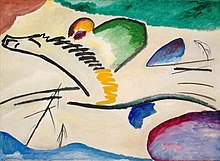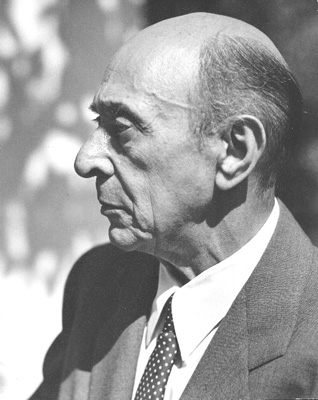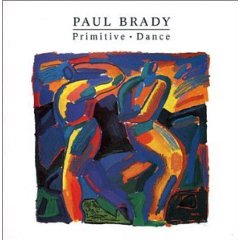The final decades of the nineteenth century and the first decades of the twentieth is sometimes called the post-Romantic era. This is the period when many composers, such as Jean Sibelius, Bela Bartok, and Ralph Vaughan-Williams, concentrated on the traditions of their own countries, anticipating nationalistic music. Others, such as Mahler and Strauss, were taking Romantic musical techniques to their utmost reasonable limits anticipating a post Romantic style. In France, Debussy and Ravel were composing pieces that that some listeners felt were the musical equivalent of impressionistic paintings.Some other -isms such as Stravinsky’s primitivism still had some basis in tonality, while other styles such as serialism, rejected tonality and the Classical-Romantic tradition. The Romantic period was essentially over by the beginning of the twentieth century The sounds and ideals of Romanticism continued to inspire some composers but .modernists eventually came to dominate art music
Society:
Music is affected by other things that are going on in society; ideas, attitudes, discoveries, inventions, and historical events may affect the music of the times.
https://courses.lumenlearning.com/vccs-tcc-mus121-1/wp-admin/post.php?post=705&action=edit
The study of our Post Romantic period begins with an overview of major trends and composers from the era. The 20th century was clearly a period of widespread experimentation. Many composers wanted the freedom to explore new com-positional approaches without the restrictions and expectations that accompany traditional genres. Even when longstanding genres were used, composers felt very comfortable abandoning the traditional structures of those genres.
The image below is an example of expressionism. Be aware that a couple of quiz questions ask you to compare paintings to the respective trend or style they represent. Note that the one below relates to Expressionism with Schoenberg and the major composer of this school.
https://en.wikipedia.org/wiki/Expressionism

Late Romanticism:
At the turn of the century, music was characteristically late Romantic in style. Composers such as Gustav Mahler, Richard Strauss and Jean Sibelius were pushing the bounds of Post-Romantic Symphonic writing. At the same time, the Impressionist movement, spearheaded by Claude Debussy, was being developed in France. The term Post Romantic was loathed by Debussy: “I am trying to do ‘something different—in a way realities—what the imbeciles call ‘impressionism’ is a term which is as poorly used as possible, particularly by art critics”—and Maurice Ravel’s music, also often labelled with this term, explores music in many styles not always related to it (see the discussion on Neoclassicism, below).

Figure 1. Arnold Schoenberg, Los Angeles, 1948
Expressionism – 12 tone technique
Many composers reacted to the Post-Romantic and Impressionist styles and moved in quite different directions. The single most important moment in defining the course of music throughout the century was the widespread break with traditional tonality, effected in diverse ways by different composers in the first decade of the century. In Vienna, Arnold Schoenberg developed atonality, out of the expressionism that arose in the early part of the 20th century. He later developed the twelve-tone technique which was developed further by his disciples Alban Berg and Anton Webern; later composers (including Pierre Boulez) developed it further still. Stravinsky (in his last works) explored twelve-tone technique, too, as did many other composers; indeed, even Scott Bradley used the technique in his scores for the Tom and Jerry cartoons.
Neoclassicism
After the First World War, a number of composers started returning to the past for inspiration and wrote works that draw elements (form, harmony, melody, structure) from it. It still had a “modern sound, however. This type of music thus became labelled neoclassicism. Igor Stravinsky (Pulcinella and Symphony of Psalms), Sergei Prokofiev (Classical Symphony), Ravel (Le tombeau de Couperin) and Paul Hindemith (Symphony: Mathis der Maler) all produced neoclassical works.
An example of Primitive Art by Paul Brady:

This link from google that I found (bob Ford) : https://www.google.com/search?q=Paul+Brady+Primitive+Artist&tbm=isch&tbo=u&source=univ&sa=X&ved=0ahUKEwj_-PjcycPXAhXK1CYKHbLkD2cQsAQIOg&biw=1095&bih=681

Figure 2. Igor Stravinsky
Futurism
Italian composers such as Francesco Balilla Pratella and Luigi Russolo developed musical Futurism. This style often tried to recreate everyday sounds and place them in a “Futurist” composition. “Machine Music” was represented by George Antheil (starting with his Second Sonata, “The Airplane” and Alexander Mosolov’s Iron Foundry.
In addition, The process of extending musical vocabulary by exploring all available tones was pushed further by the use of Microtones in works by Charles Ives, Julián Carrillo, Alois Hába, John Foulds, Ivan Wyschnegradsky, and Mildred Couper among many others. Microtones are those intervals that are smaller than a semitone; human voices and unfretted strings can easily produce microtones between the “semitones” , but other instruments will have more difficulty—the piano and organ have no way of producing them at all, aside from retuning and/or major reconstruction.
Musique Concrete
In the 1940s and 50s composers, notably the French composer Pierre Schaeffer, started to explore the application of technology to music – namely compositions using recorded sounds as raw material – sounds of nature and everyday life.. This was called Musique concrète, (“concrete music”), The term Electroacoustic music came later and included forms of music involving magnetic tape, computers, synthesizers, multimedia, and other electronic devices and techniques. Live electronic music uses live electronic sounds within a performance as opposed to preprocessed sounds that are overdubbed during a performance), Cage’s Cartridge Music being an early example. Spectral music (Gérard Grisey and Tristan Murail) is a further development of electroacoustic music that uses analyses of sound spectra to create music. Cage, Berio, Boulez, Milton Babbitt, Luigi Nono and Edgard Varèse all wrote electroacoustic music.
From the early 1950s onwards, Cage introduced elements of chance into his music. Process music (Karlheinz Stockhausen Prozession, Aus den sieben Tagen; and Steve Reich Piano Phase, Clapping Music) explores a particular process which is essentially laid bare in the work. The termexperimental music was coined by Cage to describe works that produce unpredictable results, according to the definition “an experimental action is one the outcome of which is not foreseen.” The term is also used to describe music within specific genres that pushes against their boundaries or definitions, or else whose approach is a hybrid of disparate styles, or incorporates unorthodox, new, distinctly unique ingredients.
Primitivism etc.
Important cultural trends often informed music of this period, romantic, modernist, neoclassical, postmodernist or otherwise. Igor Stravinsky and Sergei Prokofiev were particularly drawn to primitivism in their early careers, as explored in works such as The Rite of Spring and Chout. Dmitri Shostakovich, reflected the social impact of communism and subsequently had to work within the strictures of socialist realism in their music. Other composers, such as Benjamin Britten (War Requiem), explored political themes in their works, albeit entirely at their own volition. Nationalism was also an important means of expression in the early part of the century. The culture of the United States of America, especially, began informing an American vernacular style of classical music, notably in the works of Charles Ives, John Alden Carpenter, and (later) George Gershwin. Folk music (Vaughan Williams’ Five Variants of Dives and Lazarus, Gustav Holst’s A Somerset Rhapsody) and Jazz (Gershwin, Leonard Bernstein, and Darius Milhaud’s La création du monde) were also influential.
In the latter quarter of the century, eclecticism and polystylism became important. These, as well as minimalism, New Complexity, and New Simplicity, are more fully explored in their respective articles.